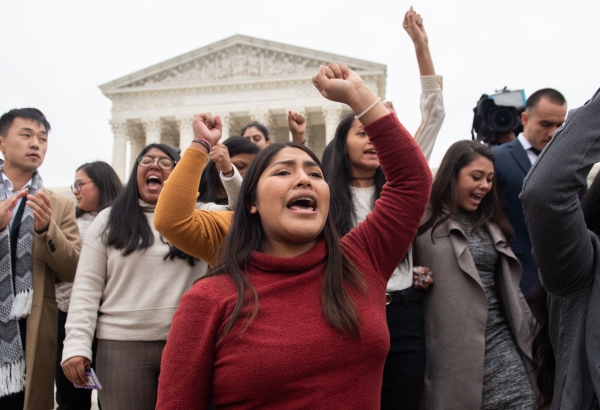 |
| Adrees Latif/Reuters |
The kids tend to show up in Garrett Reed’s classroom in shock.
Many have never been to a big city like Houston before. But now they’re here, in the United States, in Reed’s Wisdom High School classroom, with its smart boards and online learning hub. A school administrator hands each kid a laptop. Many haven’t used a computer before.
None of them speak English. Many don’t even speak Spanish, but rather K’iche’ or maybe Mam, indigenous Mayan languages from the Guatemalan hinterlands.
Many of the kids have just made the dangerous journey to the U.S. through Mexico, enduring a gauntlet of crime filled with thugs, thieves, and predators of a variety of stripes – gangbangers who recruit the boys, sex traffickers who prey on the young girls.
“They’re traumatized. I mean, not all of them, but most of them,” Reed said. “A lot of them just put their head on the desk and cry. That’s what happens. That’s fine. Just cry.”
When these “newcomers” arrive at Wisdom High, it is Reed’s job to teach them English. Reed is one of two English as a Second Language teachers at the school. But, he acknowledges, his job is much bigger than just teaching English. He also is a mentor and a protector, keeping an eye out for potential threats to his vulnerable students inside and outside his classroom.
Over the last few months, Reed said, the number of kids in his classes has at least doubled, maybe tripled. He teaches three classes a day, each an hour-and-a-half long. He started the year with about ten kids in each class, he said. He’s up to about 30 now. He’ll likely get more.
During the first three months of the year, U.S. Customs and Border Protection reported more than 350,000 encounters with illegal immigrants on the Southwest border. More than 34,000 of those encounters have been with unaccompanied minors, predominantly from the Northern Triangle region of Central America – Guatemala, Honduras, and El Salvador.
The surge at the Southwest border is the biggest in at least two decades, coming on the heels of President Joe Biden’s executive orders dismantling Trump-era immigration deterrents. Biden is allowing the unaccompanied teens and children to stay in the country, creating a perverse incentive for more kids to make the harrowing journey to the U.S.
While much of the mainstream media reporting this spring was focused on overwhelmed border facilities and so-called “kids in cages,” there has been less focus on what happens when these kids eventually disperse into communities, large and small, across the country.
 |
| Report Finds Growth in Undocumented Student Population |
It’s likely most of them will attend public schools like Wisdom High, increasing financial pressures on school systems that are already struggling through the coronavirus pandemic. In some past cases, influxes of immigrants have caused tension between school leaders who need more building space, teachers, and resources, and local taxpayers who question why they should foot most of the growing bill. Educating just the kids who’ve arrived so far this year will almost assuredly cost hundreds of millions of dollars, with the vast majority of that burden falling on the states and local governments.
Along with the financial pressures, the kids coming from Central America also bring social and academic challenges. Many of them are far behind their American-born peers academically – most have had interrupted educations. A handful have no education at all.
In recent years, some school districts have struggled with placing the immigrant children in schools. In 2016, the Southern Poverty Law Center sued a school district in southwest Florida that was sending older immigrant teens to adult-education programs if they were not on a reasonable path to graduate by age 19. The school district eventually settled the suit.
An Associated Press analysis from that same year identified 35 school districts in 14 states that discouraged Central American immigrant students from attending traditional public schools.
The Cost of Educating Unaccompanied Minors --->READ THE REST of the story HEREAnd What about Higher Education you ask:
More than 450,000 undocumented immigrant students are enrolled in higher education, according to a new estimate. Report Finds Growth in Undocumented Student Population
If you like what you see, please "Like" us on Facebook either here or here. Please follow us on Twitter here.

No comments:
Post a Comment